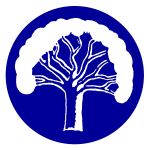Reading
Responsibility
Respect
Resilience
Creativity
Self-Belief
Truthfulness

Woodcote Way Reading
Introduction
At Woodcote Primary School, we believe that reading is fundamental to children’s lives. It provides the gateway to future learning and enables children to reach people, places and times they would otherwise never encounter. A good reader is well equipped to fully access the curriculum and therefore reach their full potential. At Woodcote Primary School, we aim to ensure that reading is integral to every lesson. We believe that reading is essential to all areas of the curriculum and as such should be encouraged and promoted at every opportunity. Children should be taught to read proficiently for their age and to have developed a love of books. Our aim is to inspire children to read a wide range of books from a wide range of authors that reflect the culture and diversity of the children in our school community. We aim to foster children who read for pleasure and purpose.
Aim
It is essential that, by the end of their primary education, all pupils are able to read fluently, and with confidence, in any subject in their forthcoming secondary education.
NC Programme of Study
The National Curriculum aims for Reading outlines that pupils should develop the below skills, knowledge and understanding:
- read easily, fluently and with good understanding
- develop the habit of reading widely and often, for both pleasure and information
- acquire a wide vocabulary, an understanding of grammar and knowledge of linguistic conventions for reading, writing and spoken language
- appreciate our rich and varied literary heritage
Curriculum
At Woodcote, we have adopted the CUSP Reading scheme. Each cohort will have a suite of core texts that will form the depth study for the academic year. These texts represent a promise from the school to every pupil that it serves of the literature that it is committed to studying throughout a pupil’s school journey. The texts have been mapped to ensure a breadth of experiences, authors, texts and themes is addressed across the Primary years. In addition to these texts, there are core poems that each year group will study in detail. Other texts studied are extracts written to help support the teaching of specific reading skills.
Planning and Teaching
Key reading skills are addressed in daily 30-40 minutes reading lessons in KS2. KS1 alternate between reading and writing lessons weekly, with a supplementary writing lesson during reading weeks. Reading is taught in one or two week blocks and lessons focus on the key text and selected extracts. The lesson begins with vocabulary analysis and moves to reading text aloud, where the children develop their prosody and fluency through a variety of methods such as choral reading, echo reading and timed practice. The lesson then follows a familiar pattern to reduce cognitive load: the children will work through a series of activities where scaffolding is gradually removed, enabling them to show independent application of the skill being taught.
Assessment
The sequence of lessons relies on clear formative assessment and knowledge of the reading skill being taught. This is supported by a clear long term plan. At the end of each term, we conduct PIRA tests to further support teacher assessment. Where gaps are identified, intervention is provided. This might take the form of ‘keep up’ interventions, where pupils receive extra attention to ensure continued progress. If necessary, ‘catch up’ interventions are put into place to address more significant gaps in fluency or comprehension. We use the Little Wandle Rapid Catch Up Programme from Year 2 onwards to ensure that gaps in phonological understanding are rapidly closed. To ensure our Reading Curriculum is accessible to all, some children receive pre-teaching and to familiarise them further with the text and/or daily reading sessions where, fluency tracking and decoding issues can be addressed.
Reading Overview by Year Group
Year Group | Autumn 1 | Spring 1 | Summer 1 |
1
| Beegu Where the Wild Things are The Storm Whale The Owl and the Pussycat (Edward Lear) Aesop’s Fables (the boy who Cried Wolf | The Tale of Peter Rabbit Look Up! And Tango makes Three Chocolate Cake (Michael Rosen) |
Here We Are The Lion Inside There’s a Ran-Tan in my Bedroom Aesop’s Fables (The Hare and the Tortoise) The Proudest Blue
|
2 | Grandad’s Island Aesop’s Fables (The Goose that Laid the Golden Eggs) Mrs Noah’s Pockets Paddington The Christmas Pine (Julia Donaldson) | The Quangle Wangle’s Hat (Edward Lear) Coming |to England The Street Beneath My Feet The Rhythm of the Rain Aesop’s Fables (The Sun and the Wind)
| Little People Big Dreams David Attenborough Fantastically Great women who Changed the World Fantastic Mr Fox |
3 | Greta and the Giants The Pebble in my Pocket Leon and the Place in Between ‘Twas the Night before Christmas Anon | Sam Wu is Not Afraid of the Dark Operation Gadgetman
| The Dancing Bear The Magician’s Nephew |
4 | The Queen’s Nose The Raven The Girl Who Stole an Elephant
| Varjak Paw Young Gifted and Black
| The Boy at the Back of the Class The Wind in the Willows |
5 | Shackleton’s Journey The Explorer | The Boy in the Tower A Midsummer Night’s dream I am not a Label | Secrets of a Sun King Five Children and It |
6 | Rooftoppers Pig Heart Boy How to Live Forever The Listeners Walter de la Mare | Skellig All Aboard the Empire Windrush The Island
| Dare to be You Introduction to Dickens Oliver Twist |
